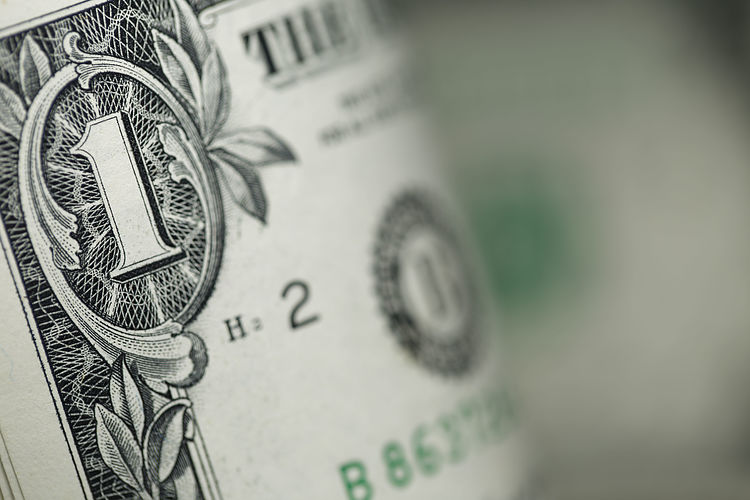- The DXY Index marks a positive stride, trading with gains of 0.60% near the 103.50 area.
- US PCE figures decelerated but showed no surprise, which gives reasons for the Fed to remain cautious.
- Investors will eye November’s ISM Manufacturing PMI report, which is due on Friday. Chair Powell will be on the wires.
The US Dollar (USD) is trending upward, and the US Dollar Index (DXY) exchanged hands on Thursday at 103.45. This USD strength is largely attributed to the latest US Personal Consumption Expenditures (PCE) inflation figures from the US, which fueled the USD and US yields higher.
Despite cooling inflation and a mixed labor market, Federal Reserve (Fed) officials are not ruling out further policy tightening, hinting at a moderately hawkish stance. This is due to officials balancing the costs of doing too little and doing too much, as economic reports are giving mixed signals or not enough evidence of inflation coming down in the eyes of the Fed.
Daily Market Movers: US Dollar gains momentum as PCE figures warn markets
- The US Dollar maintained a strong trading position on Thursday, favoured by a sour market mood after the US PCE inflation figures and an uptick in yields.
- October’s annual PCE Price Index, reported by the US Bureau of Economic Analysis, came in as expected at 3%, down from the previous rate of 3.4%.
- Also for October, the annual Core PCE Price Index matched consensus expectations at 3.5%, a decrease from the preceding rate of 3.7%.
- The weekly report from the US Department of Labor revealed Initial Jobless Claims for the week ending November 25 stood at 218K, slightly below the predicted 220K but higher than the previous figure of 211K.
- Those figures seem to have lowered the hype on markets and favour the cautious stance of the Fed, which is requesting more evidence on inflation coming down.
- On Friday, the spotlight will be on the release of the Institute for Supply Management’s (ISM) Manufacturing PMI for November. Chair Powell will also deliver a speech.
- US bond yields witnessed a rise, with numbers for 2-year, 5-year and 10-year yields logging in at 4.71%, 4.29%, and 4.34%, respectively.
- In anticipation of the upcoming December meeting, the CME FedWatch Tool signals that markets have practically priced in a no hike. Additionally, markets predict rate cuts in mid-2024.
Technical Analysis: The US dollar gains some traction, but indicators highlight bear dominance
The Relative Strength Index (RSI), Moving Average Convergence Divergence (MACD) histogram, and Simple Moving Averages (SMAs) on the daily chart collectively signal a stronghold of selling momentum. The RSI’s position below the median line indicates a trend leaning toward the sellers despite showing a positive slope. The MACD histogram’s negatives further underline the intact bearish pressures, but its bars flattened, reflecting that bears are taking a breather.
Adding to this, the index is below the 20,100 and 200-day Simple Moving Averages (SMAs), explicit evidence of bears unchallenged strength in the broader scenario.
Support levels: 103.30, 103.15, 103.00.
Resistance levels: 103.60 (200-day SMA), 104.00, 104.20 (100-day SMA)
Interest rates FAQs
Interest rates are charged by financial institutions on loans to borrowers and are paid as interest to savers and depositors. They are influenced by base lending rates, which are set by central banks in response to changes in the economy. Central banks normally have a mandate to ensure price stability, which in most cases means targeting a core inflation rate of around 2%.
If inflation falls below target the central bank may cut base lending rates, with a view to stimulating lending and boosting the economy. If inflation rises substantially above 2% it normally results in the central bank raising base lending rates in an attempt to lower inflation.
Higher interest rates generally help strengthen a country’s currency as they make it a more attractive place for global investors to park their money.
Higher interest rates overall weigh on the price of Gold because they increase the opportunity cost of holding Gold instead of investing in an interest-bearing asset or placing cash in the bank.
If interest rates are high that usually pushes up the price of the US Dollar (USD), and since Gold is priced in Dollars, this has the effect of lowering the price of Gold.
The Fed funds rate is the overnight rate at which US banks lend to each other. It is the oft-quoted headline rate set by the Federal Reserve at its FOMC meetings. It is set as a range, for example 4.75%-5.00%, though the upper limit (in that case 5.00%) is the quoted figure.
Market expectations for future Fed funds rate are tracked by the CME FedWatch tool, which shapes how many financial markets behave in anticipation of future Federal Reserve monetary policy decisions.
Read the full article here

